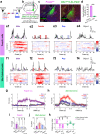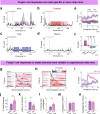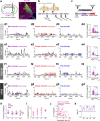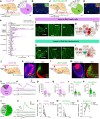This is a preprint.
Hardwired to attack: Transcriptionally defined amygdala subpopulations play distinct roles in innate social behaviors
- PMID: 36993508
- PMCID: PMC10055059
- DOI: 10.1101/2023.03.16.532692
Hardwired to attack: Transcriptionally defined amygdala subpopulations play distinct roles in innate social behaviors
Update in
-
Transcriptionally defined amygdala subpopulations play distinct roles in innate social behaviors.Nat Neurosci. 2023 Dec;26(12):2131-2146. doi: 10.1038/s41593-023-01475-5. Epub 2023 Nov 9. Nat Neurosci. 2023. PMID: 37946049 Free PMC article.
Abstract
Social behaviors are innate and supported by dedicated neural circuits, but it remains unclear whether these circuits are developmentally hardwired or established through social experience. Here, we revealed distinct response patterns and functions in social behavior of medial amygdala (MeA) cells originating from two embryonically parcellated developmental lineages. MeA cells in male mice that express the transcription factor Foxp2 (MeAFoxp2) are specialized for processing male conspecific cues even before puberty and are essential for adult inter-male aggression. In contrast, MeA cells derived from the Dbx1-lineage (MeADbx1) respond broadly to social cues and are non-essential for male aggression. Furthermore, MeAFoxp2 and MeADbx1 cells show differential anatomical and functional connectivity. Altogether, our results support a developmentally hardwired aggression circuit at the level of the MeA and we propose a lineage-based circuit organization by which a cell's embryonic transcription factor profile determines its social information representation and behavior relevance during adulthood.
Conflict of interest statement
Declaration of Interests The authors declare no competing interests.
Figures








References
Publication types
Grants and funding
LinkOut - more resources
Full Text Sources
